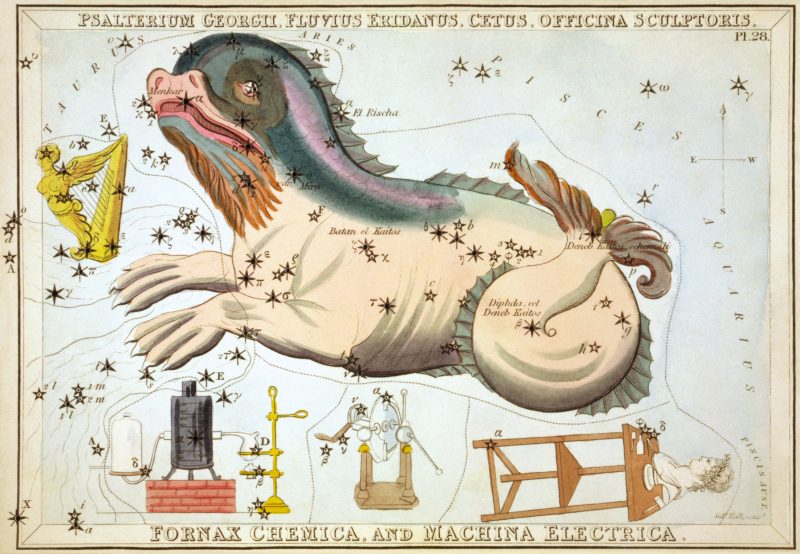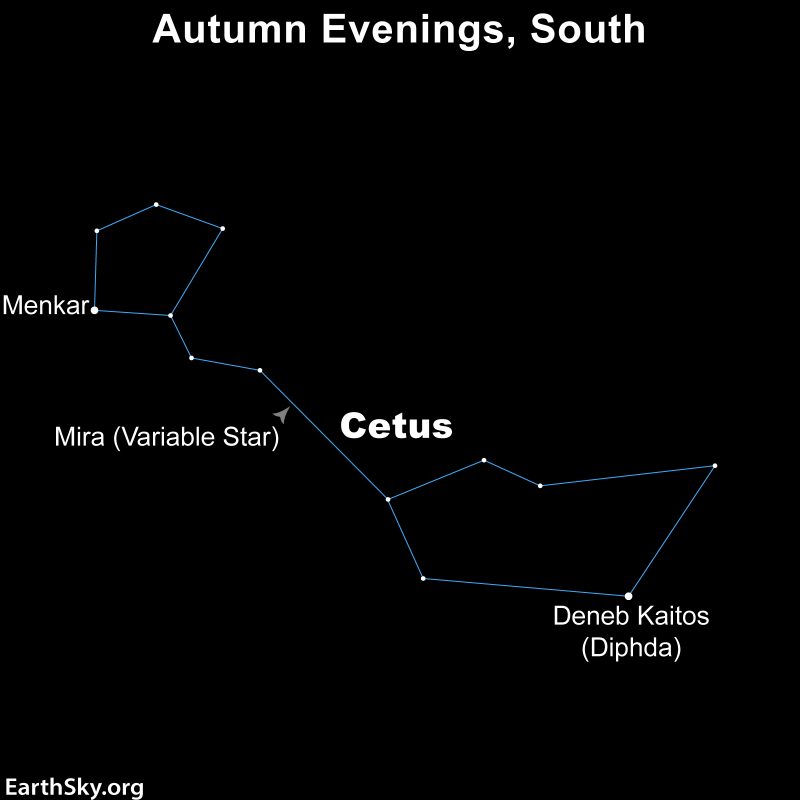
Deneb Kaitos: Whale’s tail
Deneb Kaitos is the brightest star in the constellation Cetus the Whale (or Sea-Monster). In star names, the word deneb usually means tail. And so it is with this star. It marks the tail of Cetus. Deneb Kaitos is also known by two alternate names, Beta Ceti and Diphda. It shines at magnitude 2, making it about as bright as Polaris the North Star. Neither Polaris nor Deneb Kaitos shines brightly enough to be super noticeable. But both are well within the limit of visibility to the unaided eye. Based on parallax measurements, Deneb Kaitos lies at an estimated distance of 96 light-years from Earth.
Deneb Kaitos reaches its highest in the sky on October and November evenings every year. For those of us in the Northern Hemisphere it appears in the southern sky. It’s closer to overhead as seen from Earth’s Southern Hemisphere.
The stars return to the same place in the sky about two hours earlier with each passing month (or four minutes earlier with each passing day). In middle January, look for Deneb Kaitos to reach its high point around 7 p.m. local time. On February evenings, this star drifts into the southwest sky, and disappears from the evening sky by March.
Deneb Kaitos has almost three times the sun’s mass. Its diameter is some 17 times greater than our sun’s. Check out this star with binoculars, and note its orange complexion. The orange color indicates a rather low surface temperature, and also lets us know that this star is entering into the autumn of its years.
By the way, don’t confuse Deneb Kaitos with a famous variable star also in Cetus. The variable star is called Mira the Wonderful. Mira typically remains much too faint to see with the unaided eye. But, periodically, Mira brightens enough to be visible. Its typical magnitude when brightest is about magnitude 3.5 (fainter than Deneb Kaitos). Mira’s next maximum brightness is forecast for mid-July 2022.
Star charts for locating Deneb Kaitos



Bottom line: Deneb Kaitos, aka Beta Ceti, is the brightest star in Cetus the Whale, a constellation of otherwise faint stars.
The post Deneb Kaitos marks the tail of Cetus first appeared on EarthSky.
0 Commentaires